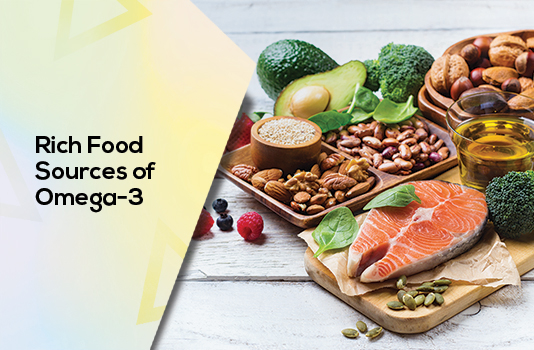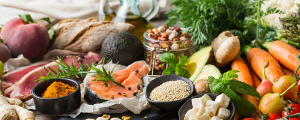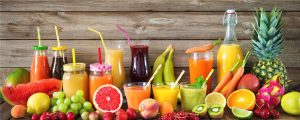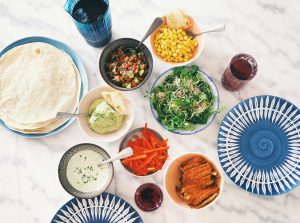Omega-3 fatty acids belong to the polyunsaturated fatty acids (PUFA) category. PUFA are long chain compounds with a carboxyl group at one end and a methyl group at another end.
Omega fatty acids (mainly Omega-3, 6 and 9) are characterized by the presence of two or more double bonds in the long chain where the number 3,6,9 represents the position of double bond from the methyl end.
Omega-3 fatty acids mainly come in three forms – α-Linolenic acid (ALA), Eicosapentaenoic acid (EPA) and Docosahexaenoic acid (DHA).
Omega-3 fatty acids are considered incredibly beneficial for heart, eye, brain, skin and help fight inflammation.
ALA is often found in plant sources of Omega-3 while marine sources are generally high on EPA and DHA.
Though our body can convert ALA to EPA & DHA, the process is very inefficient. The conversion rate varies from 2-10%.
Omega-3 is considered an essential nutrient because our body can’t produce it naturally and therefore it must be taken from external sources.
Here is a list of 13 foods that are rich in Omega-3 fatty acids
1. Mackerel
Mackerel is a popular fish that is consumed all over the world.
It is an oily fish and a rich source of omega-3 fatty acids.
However, make sure to consume fresh or properly refrigerated fishes only. Mackerel flesh gets spoiled easily when kept without proper refrigeration, especially in tropic areas
A 100g serving of salted mackerel fish contains about 5134 mg of Omega-3 fatty acids.
2. Salmon
Salmon is a popular oily fish with orange, red and white flesh.
It is one of the healthiest fish due to its high protein, omega-3 fatty acids, and vitamin D content.
Half a fillet of cooked, farmed Atlantic salmon contains 4,123 mg Omega-3 content i.e. approximately 2,260 mg in 100 grams.
Farmed salmon has higher Omega-3 content in comparison to wild salmon.
It can be prepared in many ways including smoking, baking, frying, and making soup or curry.
3. Cod Liver Oil
Cod liver oil is derived from the liver of codfish.
It is mainly used as a dietary supplement. Cod liver oil is not only a rich source of eicosapentaenoic acid (EPA) and docosahexaenoic acid (DHA) but vitamins A and D as well.
One tablespoon of cod liver oil contains 2,682 mg of omega-3 fatty acids.
4. Herring
Herring has been considered as an important food over millenniums.
Herring can be eaten raw, canned, fermented, pickled, or smoked
It is a rich source of vitamin D and omega-3 fatty acids.
Larger herring (larger than 17 cm) can be eaten twice a month while smaller herrings (smaller than 17 cm) can be eaten freely.
A 100 g serving of Atlantic herring contains about 2366 mg of Omega-3 fatty acids.
5. Anchovy
Anchovies are small, oily, common forage fish commonly found in marine waters.
There are more than 140 species of anchovies.
Anchovies are an excellent source of omega-3 fatty acids along with Vitamin A and Vitamin D.
It can be cooked and preserved in many ways like pickling in vinegar, packing in salt, keeping in brine, etc. or sometimes rolled around capers. It is preserved in the form of paste also.
There are anchovy fillets packed in oil or salt in small tins or jars for domestic uses.
Anchovies contain about 2113 mg of omega-3 per 100g serving.
6. Sardines
Sardines are commonly consumed, small, oily forage fish that are rich in vitamins and minerals.
Adding sardines to the diet provide Omega-3, vitamin B2, vitamin D, proteins, and key minerals such as phosphorus, calcium, potassium, and some trace minerals like iron and selenium.
Consumption of sardines on a regular basis can help reduce the risk of cardiovascular disease and Alzheimer’s disease, support energy metabolism and proper nervous system function.
Sardines contain about 1,480 mg Omega-3 fatty acids per 100 g.
7. Krill oil
Krill oil is extracted from a species called Antarctic krill.
Krill Oil is an excellent source of Omega-3 as well as Astaxanthin, an antioxidant.
The unique nutrient combination provides krill oil anti-inflammatory and antioxidant properties.
The presence of omega-3 acids in krill oil can help improve heart health, blood lipid levels, and lower triglycerides levels.
8. Oyster
Oyster is salt-water bivalve mollusks that live in marine or brackish habitats.
There are different types of oysters and some of them are consumed commonly, cooked or raw.
Oysters are a rich source of proteins, minerals like zinc, iron, calcium, selenium, and vitamins A and B12.
Apart from a rich source of Omega-3, oysters are also considered as an aphrodisiac. The rich presence of amino acids and Zinc increase the level of production of testosterone and dopamine.
6 raw eastern oysters contain 370 mg Omega-3. This is equivalent to 435g of Omega-3 per 100g of serving.
9. Caviar
Caviar is food mainly consisting of roe cured with salt, eaten as a garnish or a spread.
Generally, the food caviar refers to roe from wild sturgeon in the Caspian Sea and the Black Sea.
Caviar is an excellent source of Vitamin B12. About 30 g of caviar is enough to provide 100% RDA of Vitamin B12.
Caviar is also a rich source of key minerals like calcium, zinc, magnesium, sodium, and selenium.
100g of caviar provides 6790 mg of omega-3 fatty acids.
10. Flaxseed
Flaxseed is a food crop as well as a fiber crop, mainly cultivated in cold climate regions of the world.
Flaxseed is a rich source of Omega-3, protein, dietary fibers, vitamin B, Thiamine and minerals like magnesium, potassium, and phosphorus.
Flaxseed is a rich source of Omega-3, Omega-6, and Omega-9 as well. Most of the omega-3 in flaxseed is in the form of ALA
It contains 54% omega-3 fatty acids, 18% omega-9 fatty acids and 6% omega-6 fatty acids.
100g of Flaxseed provides 22813 mg of Omega-3 and about 5911 of Omega-6 fatty acids.
11. Chia seeds
Chia seeds are small edible seeds that are oval-shaped and grey with black and white spots on it.
It can acquire 12 times its weight when it is soaked in water. Liquid soaked chia seeds develop a mucilaginous coating that gives chia seed based foods and beverages unique gel texture.
Along with Omega-3, dried chia seeds are a good source of thiamin and niacin, a fairly good source of riboflavin and folate, and key minerals like calcium, iron, magnesium, manganese, phosphorus, and zinc.
100 g of chia seeds contain 17552 mg of Omega-3 and 5785 mg Omega-6 fatty acids.
12. Walnut
A walnut is the edible seed of walnut fruit.
When the fruit is fully ripe, the shell will shed and then can be used as food or garnishing a dish.
Walnuts are a good source of Vitamin B Complex, Protein, carbohydrates, dietary fibers and several key minerals like manganese.
100 g of walnut contains about 2000 mg of Omega-3 and 33000 mg of Omega-6 fatty acids.
13. Soybeans
Soybeans, along with being high on protein and polyunsaturated fatty acids, are good sources of important nutrients like dietary fiber, iron, manganese, phosphorus, and several B vitamins, vitamin K, magnesium, zinc, and potassium.
100g of soybean contains about 1330 mg of Omega-3 and 9920 mg of Omega-6 fatty acids.
In Conclusion…
Omega-3 is an essential nutrient with multiple benefits ranging from fighting inflammation, reducing the risk of heart diseases and providing support to eyes and brain.
It’s relatively easy to consume Omega-3 regularly from multiple sources.
However, if you are a vegan or don’t eat many of the omega-3 food sources, consider taking an omega-3 supplement to fulfill your daily dose of Omega-3 requirement.













